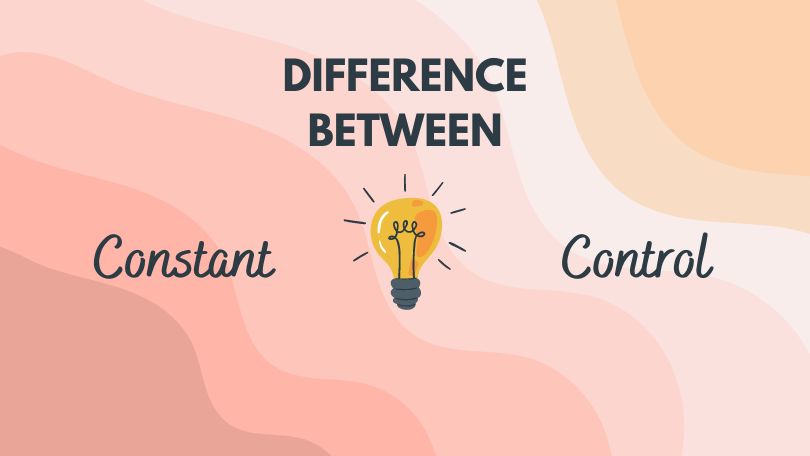In this article, we will discuss the difference between constant and control. We will look at how they are different from one another and when to use each of them.
Constant is a word that comes from mathematics. It means unchanging or remaining the same over time. A good example of a constant would be pi (π). You can calculate pi for any length you want, but it is always going to come out as 3.14159265358979323846…
A control variable, on the other hand, is kept constant by design to isolate the connection between independent and dependent variables. In an experiment, the control variable is what the researcher changes in order to see how it affects the dependent variable.
In general, you would use a constant when you want to keep track of something specific that doesn’t change and control when you want to change something in order to study its effects. For example, if you were studying the effects of different types of food on a person, you would change the type of food in order to see its effect. You would then use control variables such as age, height, and weight to keep them constant so that these do not have an effect on your results.
What is a Constant Variable?
The constant variable is a term used in mathematics and physics. In a mathematical expression, a constant is a number that does not change. This means the value of the number never varies or change over time.
In the case of an experiment, a constant is an important factor that never changes. Its value can’t be changed at any point during or after the experiment. For this reason, many people do not see it as an experimental variable.
What is a Control Variable?
A control variable, on the other hand, is kept constant by design to isolate the connection between independent and dependent variables. In an experiment, this means that all of your test subjects are set up in exactly the same way so as not to introduce any bias. The only difference between them is the thing you are testing – the independent variable.
For example, if you’re studying how caffeine affects heart rate, your control variables might be things like age, weight, and exercise habits of your test subjects. This is because those factors could also affect heart rate in their own right.
In this way, the control variables are kept constant within a test group to make sure that any change in heart rate is due to caffeine intake rather than some other factor. In general, you would use a control variable when you want to keep something else from affecting your results and a constant when you just need to know how much of something there is.
When to use a Constant Variable?
There are times when you might want to use a constant variable in your work. One example of this would be if you were studying the effects of changing temperature on an object over time. In this case, you would have a constant value for the amount of time you studied (say, 24 hours).
You could also use a constant variable in cases where you are studying the effect of different types or amounts of materials. For example, if you were trying to determine how much water is necessary for cotton seeds to sprout and grow properly (in order to optimize growth), it would make sense to ensure that all your test samples had the same amount of water.
In these cases, you want to make sure that all other factors are held constant so that the only thing that changes is the independent variable. This will help you get a more accurate reading on what you’re studying.
When to use a Control Variable ?
There are times when you would use a control variable in your project. One example of this is testing the effects of caffeine on heart rate, as discussed earlier. You could also use control variables when you are studying something that might change through random chance or outside factors, such as how some people will make more money than others even if they have similar skills and experience levels due to luck.
In these cases, you want to make sure that any difference in the results is due to the independent variable and not some uncontrolled factor. This is where using a control group can be very helpful – it allows you to compare two groups of people who are as similar as possible except for the one thing you’re testing.
Difference Between Constant and Control Variables
- The main difference between constant variables and control variables is that a constant variable remains the same no matter what you are testing. A control variable, on the other hand, stays fixed during your research in order to isolate any possible effects of an independent variable. This means using each type will affect your results differently depending on which situation you’re studying.
- Constant’s value can not be represented on the graph while control is represented on the graph.
- Control variables can be used in experiments while constant can also be used in mathematical expressions.
Conclusion
The difference between constant and control variables is important to understand when designing experiments or doing research. Constant variables remain the same no matter what, while control variables help you isolate the effects of an independent variable. Knowing which type of variable to use in a given situation will help you get more accurate results from your work.

